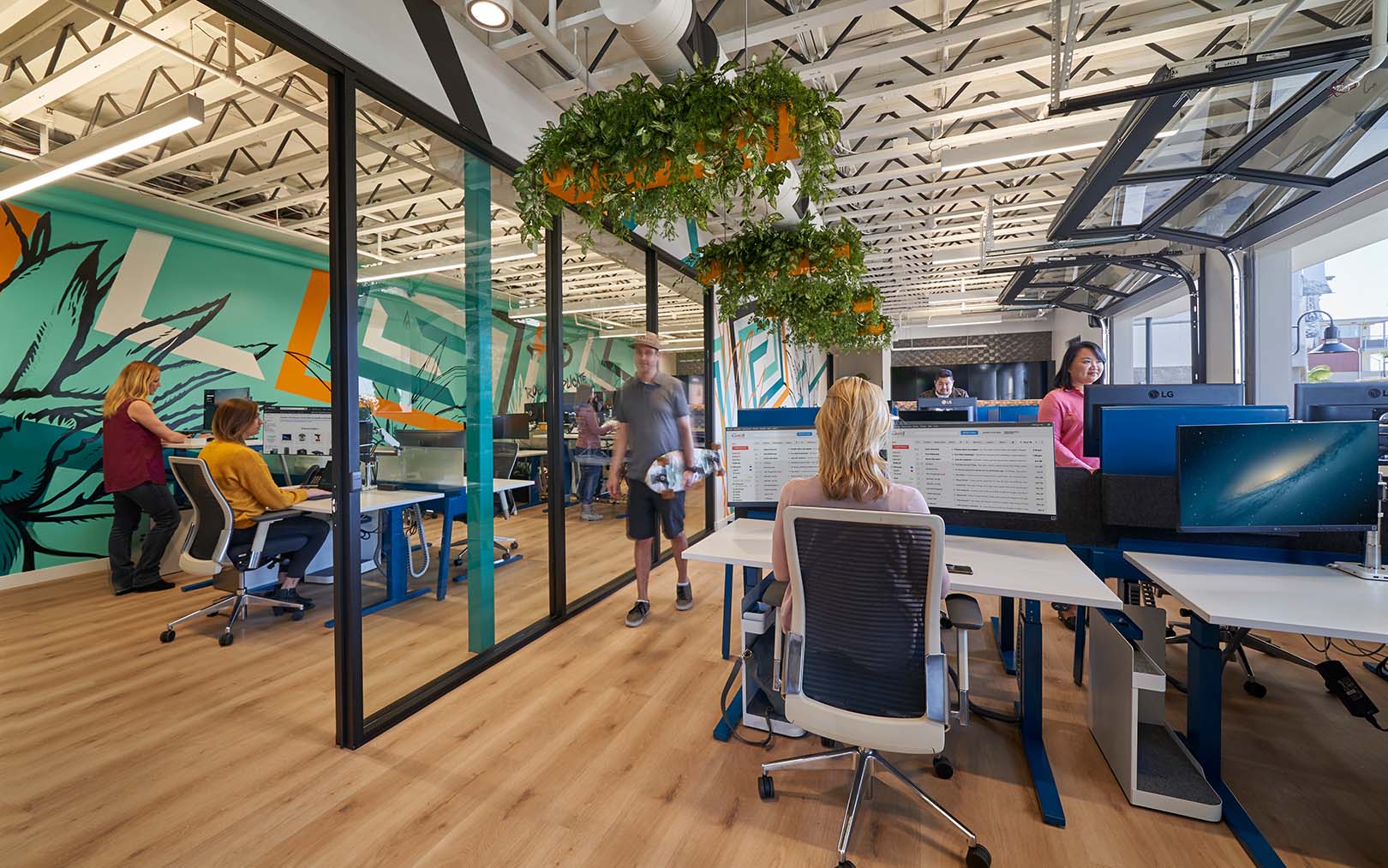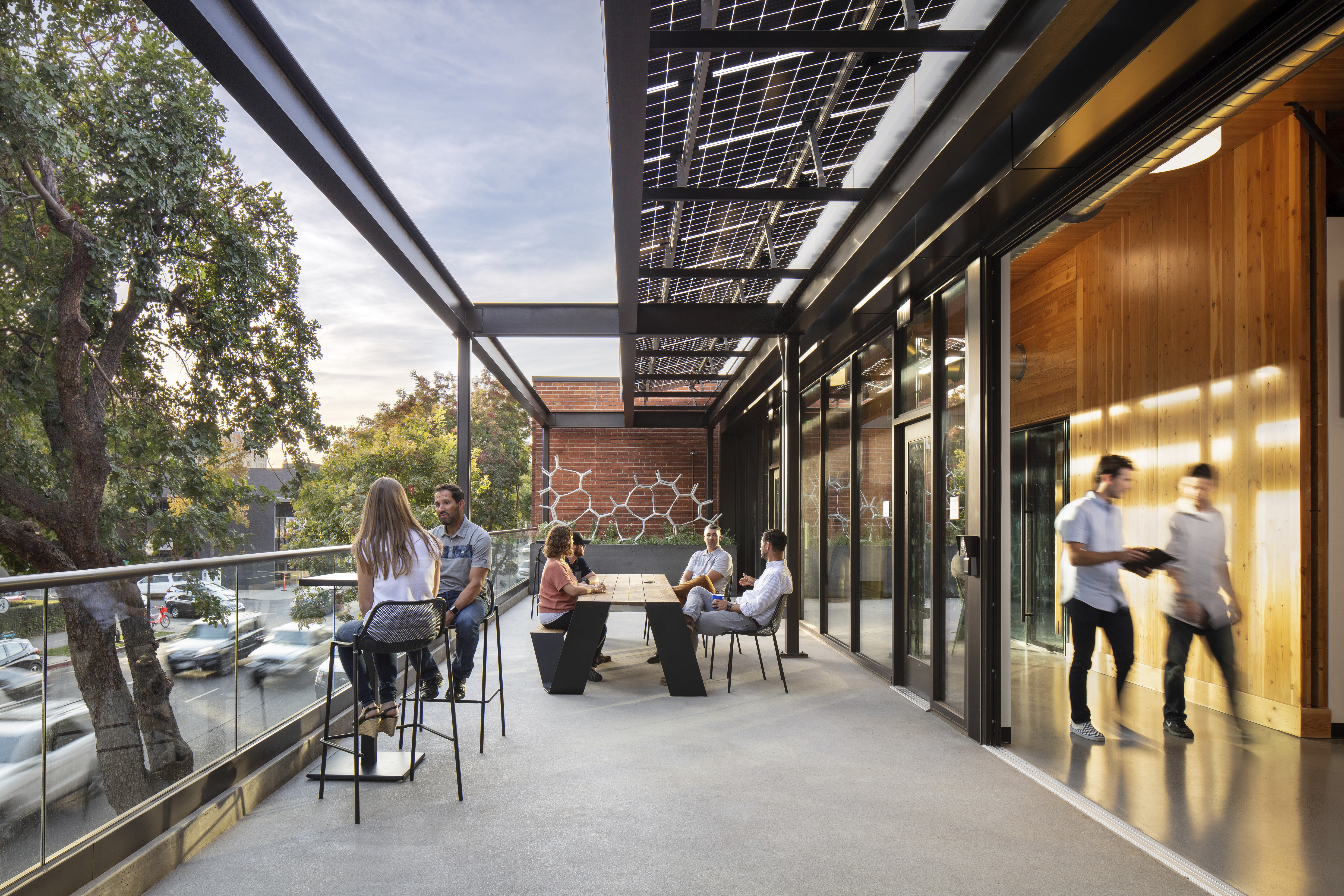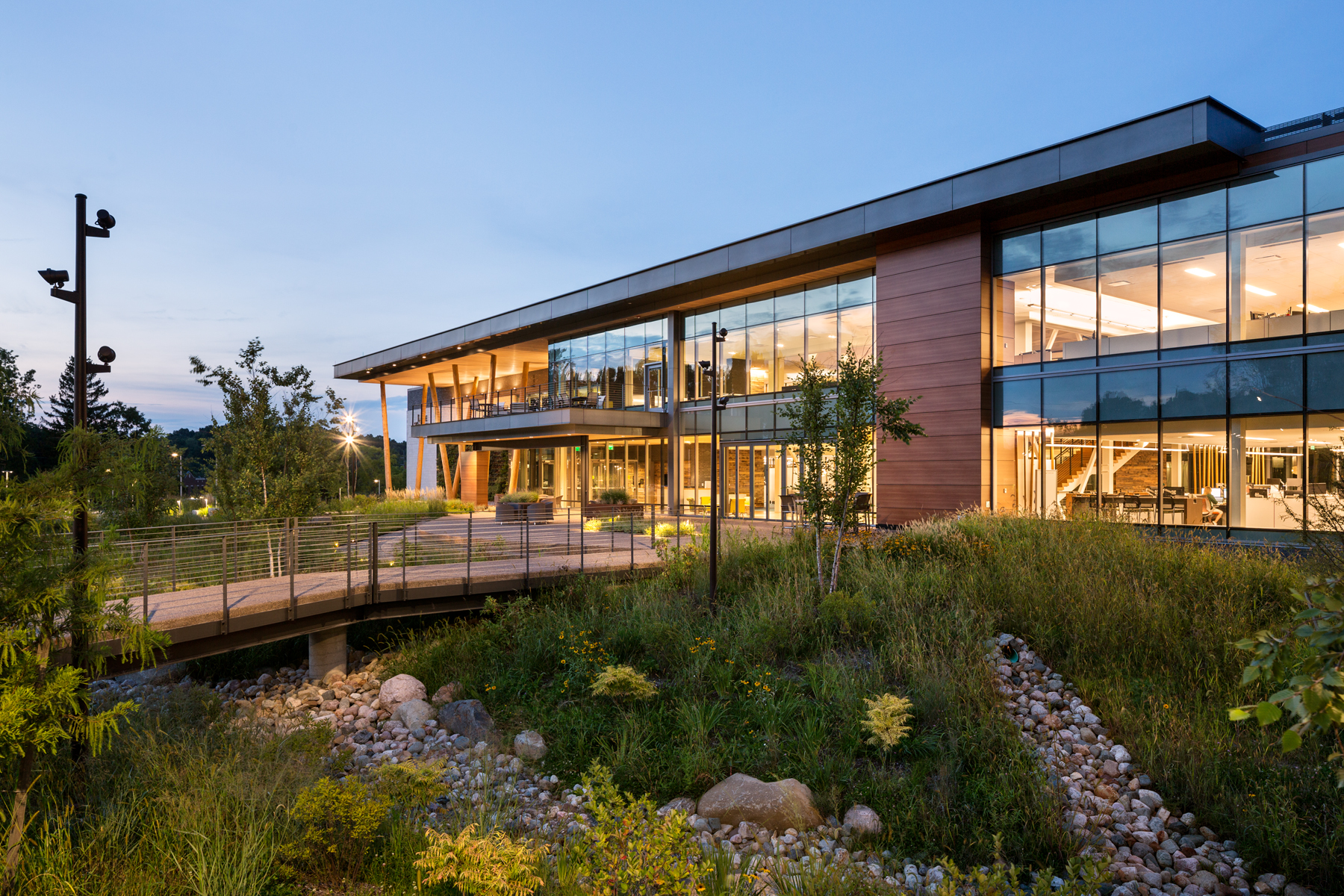5 Trends Shaping Workplace Design

Today's competitive and dynamic work environment has companies taking a closer look at what brings employees to the office – and what keeps them coming back. Here are five key drivers that we believe are integral to both the future of work and office design.
Flexibility
We’ve long known that when it comes to office design and work, one size does not fit all. Now more than ever, employees have different expectations of how and where they will work. This has companies testing new environments that allow space to flex and evolve as staff needs and functional requirements change. As more employees choose to do focus work at home and come into the office for tasks that require group dynamics, many companies are adapting their offices to devote more space to collaboration and connection. Users also expect more than just workstations and conference rooms as options for completing tasks while at the office. Spaces need to be designed to support a variety of work types and preferences at any given time. Furniture plays an important role in flexibility not only because it is quicker to pivot to new typologies with furniture than traditional construction, but it also allows users to redefine spaces themselves.
Technology
Technology is no longer passive. It has evolved from a background player to a driving force in today's workplace. Thoughtful and innovative incorporation of technology in workplace design transforms traditional spaces into dynamic hubs of creativity and efficiency, paving the way for a future-ready work environment. For instance, in hospitality we have already seen AI enabled kiosks created for hotels and similar venues to help users navigate room availability, locate corporate events such as conferences and banquets and even order rooms service. That same technology can now show available meeting rooms and desks, find their colleagues within the building and even catch up on or plan social events. Organizations are utilizing AI in applications that help to address the physical comfort of users as well. AI can be employed to recognize patterns in a person’s preferred location within a space, as well as their preferred lighting levels and temperature settings. These preferences are stored and automatically activate when a user enters a space, eliminating the need to adjust each feature separately and freeing up more time for employees to focus on the task at hand. And, of course, we see AI being utilized in countless ways to streamline efficiencies with day-to-day tasks such as taking meeting minutes, drafting narratives and organizing documents. We know that AI will continue to evolve exponentially and organizations that find ways to creatively harness and implement its power will be at an advantage.
Workplace Experience
Employees can choose to work from any number of spaces or places. Many go to the office to collaborate with teammates and opt to work from home to save time and money. The phenomenon of "coffee badging" underscores that staff won’t stick around an office long without a meaningful reason to stay. So, what benefit comes from waking up earlier, commuting, paying for parking and dealing with numerous other details that accompany heading to an office? Organizations must do more to earn the commute and, while not quantifiable, create a strong corporate culture and a workspace that fosters feelings of belonging are returning to the forefront as valuable catalysts for change. During the pandemic, many employees were affected by the lack of physical connection with colleagues and missed the sense of belonging that came from working alongside others. Considering the number of people that have changed jobs since 2020, it is imperative that companies instill their culture and ethos in all staff, and that is difficult to do remotely. Additionally, employees have become accustomed to being able to tackle small household responsibilities – like tossing a load of laundry into the wash between meetings – or relieve stress by stepping away to take a quick walk while working from home. Finding creative opportunities to incorporate spaces or amenities that promote balance … even involving non-work-oriented tasks … and wellbeing while at the office will support employees mentally and encourage their return to the office.
Employee Inclusion and Equity
Hybrid is here to stay. The spaces we design must help to provide an inclusive employee experience, whether teammates are working from the office or at home. Adopting next generation conference tables paired with AI cameras that capture whiteboard content and provide multiple views of participants is one step towards making hybrid collaboration more equitable. In order to achieve inclusivity for all employees, companies must look at the varied and unique needs of all individuals, whether they are working in the office or remotely.
But inclusiveness entails so much more than tech savvy technology. It is estimated that 15-20% of the workforce is neurodivergent in some capacity. To encourage them to participate fully in person in the office companies should provide a variety of spaces to accommodate neurodiverse needs. So many spaces today are both high tech and touch. We have come to realize that these must be balanced with low stimulation spaces or spaces that allow for controlled sensory stimulation to meet various neuro-profiles. Post-pandemic studies have revealed that sound is primary concern for the neurodiverse and neurotypical. Design solutions should allow for a range of sound levels throughout an environment. Wayfinding is another design element that can help the neurodiverse navigate a space while also providing a sense of order and safety.
Wellness and Sustainability
Sustainability in the workplace non-negotiable. Employers are re-examining their ESG policies and job candidates are considering their potential employer’s track record on sustainability and resiliency before accepting a position. According to a report from Brookfield Properties and Foster + Partners, employees favor companies that make sustainability a priority in their workplaces. And in today’s world, sustainable environments go far beyond ergonomics and material specification; they now encompass indoor air quality, access to outdoor spaces, energy saving devices and systems and water quality. Additionally, operational considerations such as healthy food choices, cleaning and maintenance protocols, activity incentives and structured wellbeing activities also play a role in a facility’s overall sustainability. As a result, rating systems such as WELL and Fitwell are increasing in popularity because their programs take into account a greater number of operational and staff experience factors than LEED certification programs.
Embracing the Future
These trends are but a snapshot in time. While we can’t predict what the future holds for the world of work, we can recognize with certainty that workplace design and the role of the office will continue to evolve. As designers, we must remain nimble and be willing to challenge ourselves to push boundaries, test our creativity and bring innovative new ideas to our clients and our firms. We must design a better future. And we must begin doing so now.




